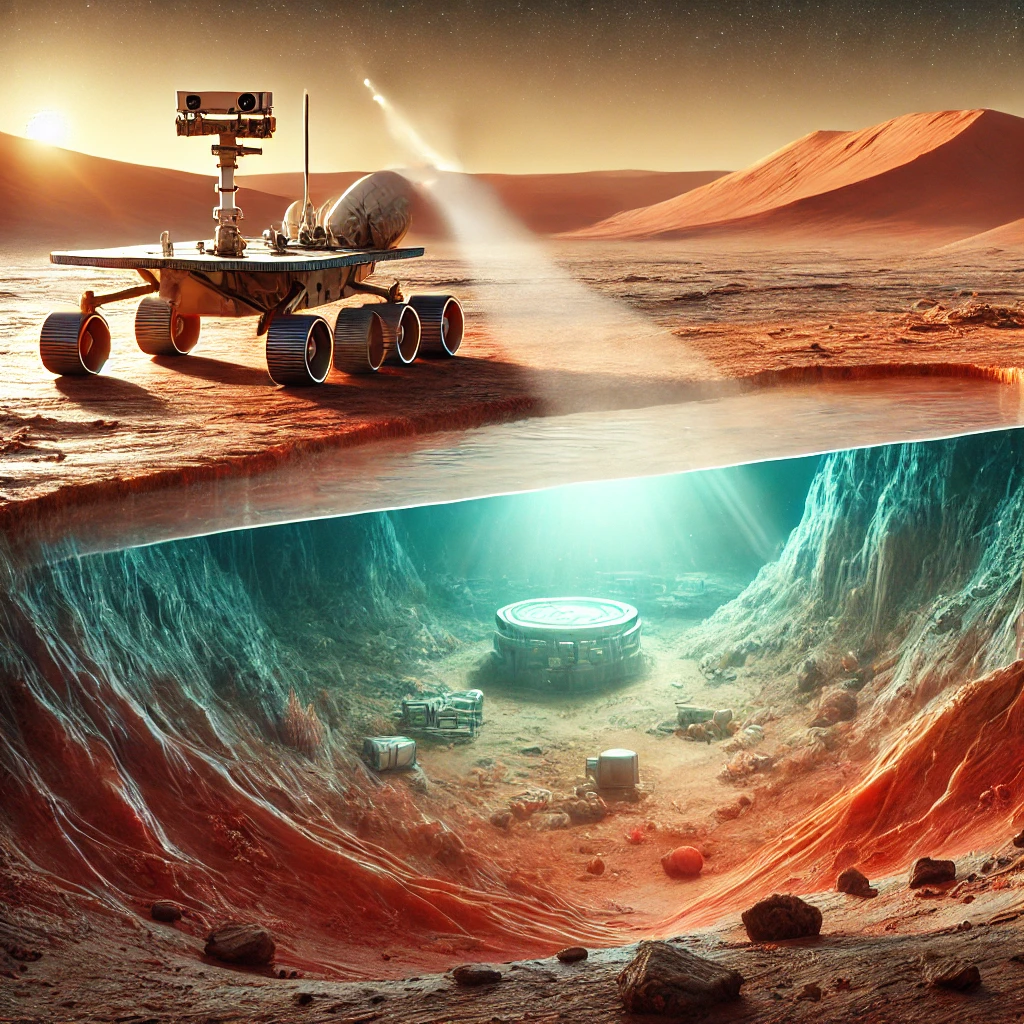Recent discoveries have unveiled compelling evidence of ancient liquid water on Mars, suggesting that the Red Planet once hosted environments potentially conducive to life. These findings, derived from various missions and studies, have significantly advanced our understanding of Mars’ geological history and its capacity to support life.
Zhurong Rover’s Discovery of Ancient Martian Beaches
China’s Zhurong rover, part of the Tianwen-1 mission, has provided substantial evidence indicating that Mars once had vast oceans and sun-soaked beaches. The rover’s ground-penetrating radar detected thick layers of material beneath the Martian surface, resembling Earth’s coastal deposits, suggesting the presence of an ancient ocean known as Deuteronilus, approximately 3.5 to 4 billion years ago. These findings strengthen the hypothesis that Mars once hosted a large body of liquid water, potentially suitable for life.
Reevaluation of Mars’ Red Hue and Implications for Water Presence
Recent research led by Adomas Valantinas from Brown University challenges the traditional understanding of why Mars appears red. The study suggests that the Red Planet’s characteristic color may be due to ferrihydrite, a water-bearing iron oxide, implying that the planet became rusty when it still had liquid water several billion years ago. This discovery provides new insights into Mars’ past environmental conditions and its potential for habitability.
Discovery of Subglacial Liquid Water Reservoirs
In 2018, scientists reported the detection of a subglacial lake beneath Mars’ south polar ice cap, spanning 20 kilometers horizontally. This discovery marked the first evidence for a stable body of liquid water on the planet, suggesting that hypersaline perchlorate brines could exist under present-day Martian conditions.
Implications for the Search for Life
The presence of ancient oceans, beaches, and liquid water reservoirs on Mars has significant implications for the search for extraterrestrial life. These environments could have provided the necessary conditions for microbial life to emerge and thrive. The discoveries also offer valuable insights for future missions aiming to uncover signs of past or present life on Mars.
The accumulating evidence of ancient liquid water on Mars paints a picture of a planet that once had environments remarkably similar to Earth’s. These findings not only enhance our understanding of Mars’ geological history but also fuel the ongoing quest to determine whether life ever existed on the Red Planet.
External Sources Consulted
Evidence of beaches from an ancient Martian ocean detected by Chinese rover: (Reuters)
Why is Mars red? We were wrong, say scientists: (The Times)
Multiple subglacial water bodies below the south pole of Mars unveiled by new MARSIS data: (arXiv)
Water on Mars: how it will change the search for alien life: (The Times)








Leave a Comment